There can be your advertisement
300x150
House on Kotel'nicheskaya Embankment
How the Soviet elite lived in Stalinist high-rises and what makes these apartments notable today
On the bend of Moscow River and Yauza, like a giant ship, rises one of the most famous Stalinist high-rises — a 26-story house on Kotel'nicheskaya Embankment. This majestic ensemble, built between 1948 and 1952, became not just a residential building but a true symbol of an era where imperial luxury and Soviet life intertwined, career ascents and tragic falls of its famous residents.
Main points from the article:
The house on Kotel'nicheskaya Embankment was envisioned as a city within a city with its own infrastructure;
The apartments had unique layouts — from modest "one-room" flats to luxurious apartments with fireplaces;
Famous actors, directors, writers and scientists of the Soviet era lived here;
Today, apartments in this house are among the most expensive and prestigious in Moscow;
- Many interiors retain original elements of Stalinist grandeur.
The City in the City: Unique Infrastructure of the Stalinist High-Rise
The high-rise on Kotel'nicheskaya Embankment, designed by architects D.N. Chechulin and A.K. Rostkovsky, was intended as an autonomous microdistrict where residents could get everything they needed without leaving their home.
Everything necessary for comfortable living was located inside the complex: a grocery store, laundry, atelier, post office, savings box, hairdresser, cinema "Zarya" with 472 seats and even a restaurant. Underground spaces housed a bomb shelter and a large garage — a luxury by the standards of post-war Moscow.
Interestingly, there were two types of elevators in the building: regular ones for all residents and special ones — more spacious and comfortable, exclusively for residents of "nomenclature" apartments. Such segregation was a common feature in Soviet elite real estate.
The house's special pride is its structure. The high-rise consists of a central tower and adjacent buildings of varying heights, forming what looks like "wings." That is why from a bird's-eye view the building resembles the Gothic letter "E" — which some architectural historians connect with the first letter of the surname of Catherine (Stalin), the leader's daughter.
Definition
- How a palace became a station: the history of Kazansky Railway Station
- The main building of MGU: university or skyscraper with surprises?
- The "Falling Skyscraper": the story of one of Moscow's most unusual buildings
- Ornate House on Leningradskoe Highway: lace legend of Soviet architecture
 Photo: pinterest.com
Photo: pinterest.comFrom 30 to 300 Square Meters: Variety of Layouts for Different Elite Strata
Contrary to popular belief, not only members of the highest nomenclature and stars of Soviet culture lived in the house on Kotel'nicheskaya. Engineers, scientists, military personnel and production pioneers — people deemed worthy of elite housing by the state — also received apartments here.
This social mix was reflected in the remarkable variety of layouts: the house has apartments ranging from modest 30-40 square meters to luxurious 250-300 square meters. The largest apartments were located in the central tower and had 5-7 rooms with ceilings up to 3.5 meters high.
"The apartments of the highest category were true palaces," says architectural historian Maria Naschokina. "They included a spacious living room, several bedrooms, an office, dining room, rooms for servants, two or three bathrooms. Some even had fireplaces — a rare occurrence in Soviet housing".
Better materials were used for interior finishing: oak and palisander parquet, marble, artistic ceiling moldings, bronze fixtures. In the most prestigious apartments, built-in bookshelves and marble fireplaces were even installed.
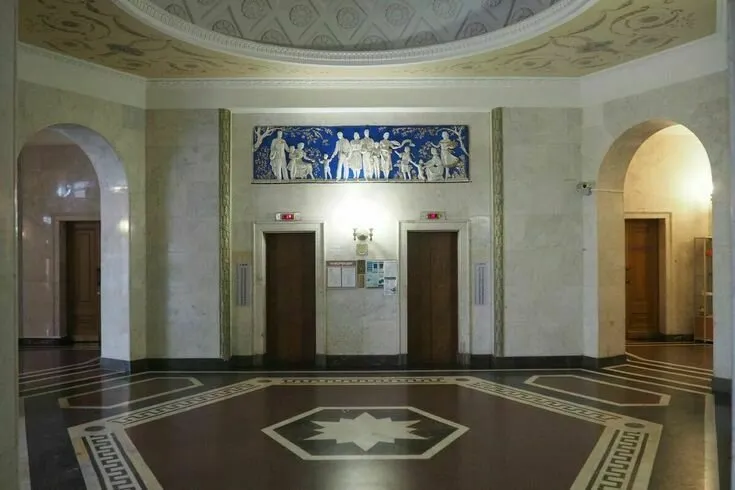 Photo: pinterest.com
Photo: pinterest.com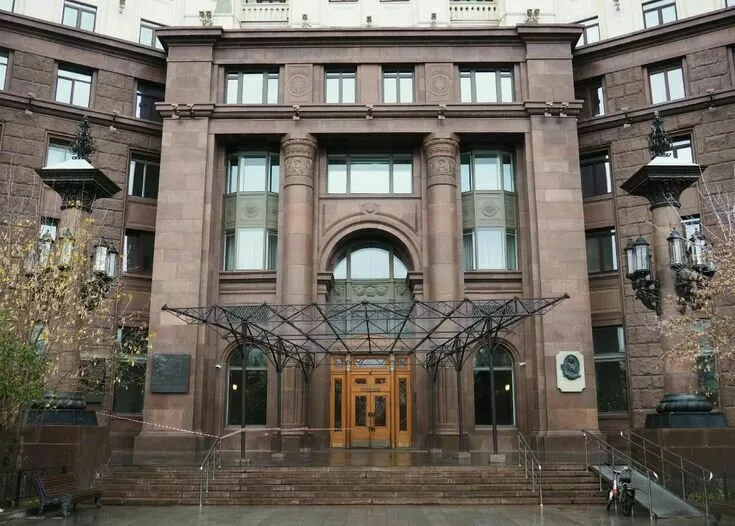 Photo: pinterest.com
Photo: pinterest.comFamous Residents: From Faina Ranevskaya to Alexander Shirvindt
The list of famous residents who lived in the house on Kotel'nicheskaya is impressive. Those deemed "national treasures" by power received apartments here: outstanding actors, directors, writers, scientists.
One of the most famous residents was Faina Ranevskaya. When asked how she lived in the high-rise, she replied with her characteristic sarcasm: "I'm like a flea, sitting in the crack on the second floor." Ranevskaya's apartment was indeed not the largest, but its windows faced the embankment, offering a magnificent view of the Kremlin.
Among other notable residents were:
Poet Konstantin Simonov;
Writer Vasily Aksyonov;
Ballerina Galina Ulanova;
Actress Nonna Mordeyukova;
Actor Alexander Shirvindt;
Composer Nikita Bogoslovsky;
Cinema director Grigory Alexandrov and actress Lyubov Orlova.
Each apartment, especially those belonging to creative individuals, had its unique character. For example, Galina Ulanova's apartment has been preserved to this day as a museum. Visitors can see the authentic setting of the 1950s: furniture, dishes, personal belongings of the great ballerina.
 Photo: culture.ru, Faina Ranevskaya
Photo: culture.ru, Faina RanevskayaDark Pages: Not Just Luxury and Prestige
The house's history was not only filled with happy moments. Dramatic events took place here, reflecting the contradictory nature of the era.
Not only regime favorites lived in the high-rise but also those who later fell into disfavor. One well-known story involves dramatist Alexander Galich, who after being expelled from the Union of Writers was forced to leave his apartment and emigrate.
In 1998, a tragedy occurred in the house: Zoya Fedorova, a famous Soviet actress, was murdered in her apartment. This crime remains shrouded in mystery and has spawned many theories — from domestic conflict to political assassination.
Another notable story involves writer Yuri Trifonov. In his novel "Exchange," heroes dream of moving from communal housing to their own separate living space. Ironically, the author himself lived in one of the most prestigious high-rises in the country.
Modern Life of a Historical Giant
Today, the house on Kotel'nicheskaya Embankment retains its status as one of Moscow's most prestigious addresses. Apartments here cost between 30 to 150 million rubles, depending on size and condition.
Many current owners treat the historical interiors with care. "Conservative restoration" is in vogue — preserving original elements of Stalinist grandeur: moldings, parquet, doors — but modernizing engineering systems and kitchens with bathrooms.
"These apartments are unique," says interior designer Elena Malkova. "They have magnificent room proportions, high ceilings, quality materials. We strive to preserve the historical spirit by adding modern technologies. For example, we integrate smart home systems, but keep traditional door handles and outlets — adapted to modern standards".
Interestingly, the cinema "Zarya" still operates in the house today, now called "Illusion," specializing in art-house and classic world cinema. A museum-apartment of Galina Ulanova is also open there, offering guided tours.
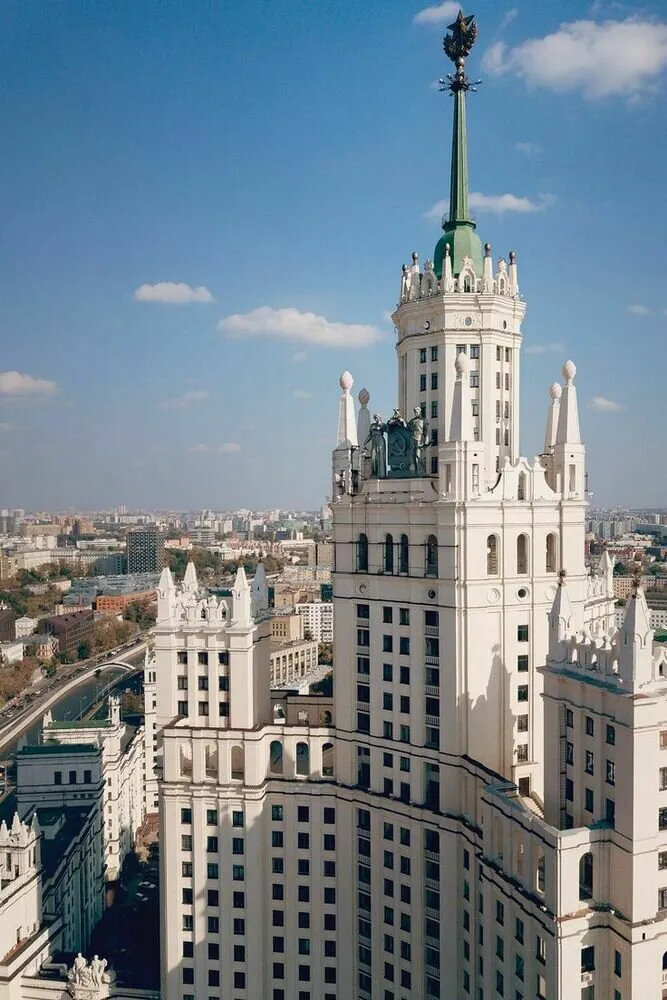 Photo: pinterest.com
Photo: pinterest.comArchitectural and Interior Solutions Still Relevant Today
What is surprising is that many architectural and interior solutions implemented in the house on Kotel'nicheskaya still look relevant even after 70 years.
Spacious hallways with niches for storage, vestibules that increase room illumination, built-in wardrobes, and a thoughtfully designed storage system — all of this can be seen in modern design projects.
Special interest lies in the spatial organization of large apartments, where clearly defined public and private zones were established. Living rooms and dining rooms were often combined into a single space for entertaining guests, while bedrooms and offices were located in the depths of the apartment.
"The layouts of apartments in Stalinist high-rises were much more functional than commonly believed," explains architect Pavel Gerasimov. "There was no wasted space here. Every square meter was used rationally. Even in small apartments, there were necessarily places for storing books — at that time this was considered a necessity".
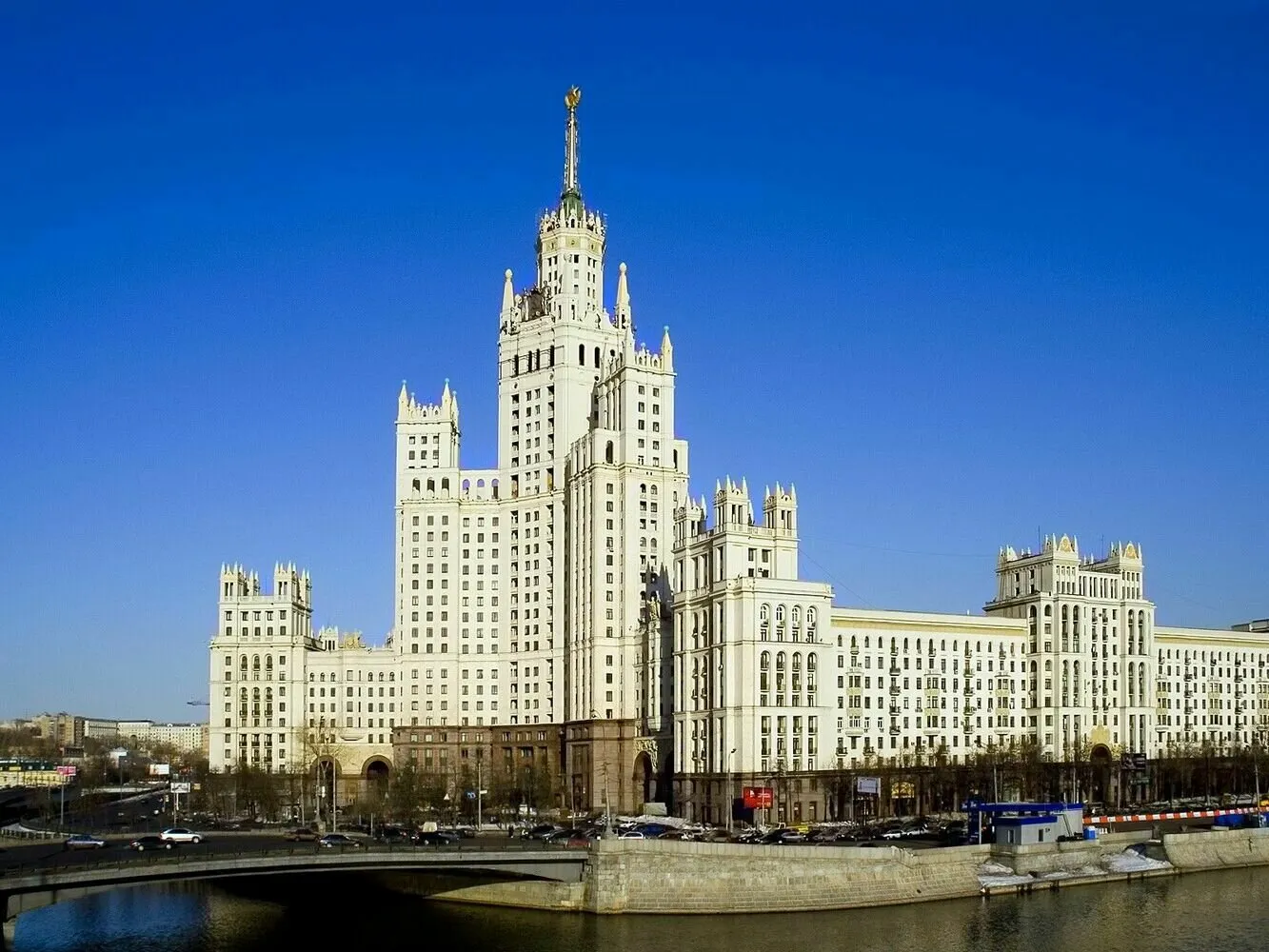 Photo: pinterest.com
Photo: pinterest.comConclusion: Between the Past and Future
The house on Kotel'nicheskaya Embankment remains a unique monument of its era — a time when the ambitions of the state were embodied in grand architectural projects. This building still preserves the memory of outstanding people who lived here, their destinies, creative peaks and dramatic falls.
Today, strolling along the embankment and gazing at the majestic silhouette of the high-rise, it's hard not to think about those who looked out over Moscow from these windows seven decades ago. Life continues within these walls — now different, modern, yet still connected by invisible threads to the history of this great house and the country.
For lovers of architecture and history, the house on Kotel'nicheskaya Embankment is not just elite housing but a true legend of Moscow, embodying an entire era in stone and concrete. Despite its distinguished age, it continues to impress and inspire both architects and ordinary citizens, reminding us that true beauty is timeless.
Cover: pinterest.com
More articles:
 How to Decorate a Small Hallway in a Studio Apartment
How to Decorate a Small Hallway in a Studio Apartment Country House, Into Which You Want to Move: 6 Trendy Ideas Relevant Today and in the Future
Country House, Into Which You Want to Move: 6 Trendy Ideas Relevant Today and in the Future Smart Storage Organization: Systems That Actually Work
Smart Storage Organization: Systems That Actually Work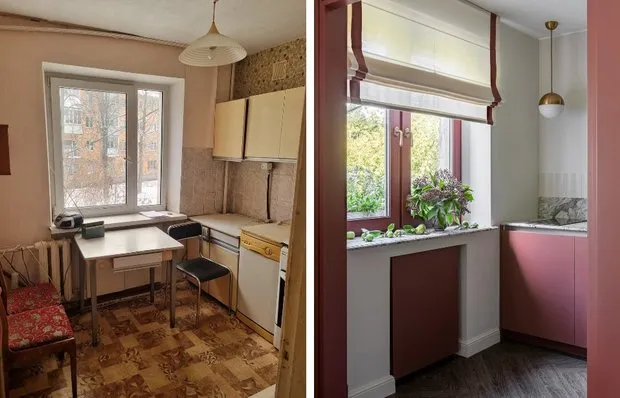 Before and After: Bold Kitchen Interior in a Khrushchyovka
Before and After: Bold Kitchen Interior in a Khrushchyovka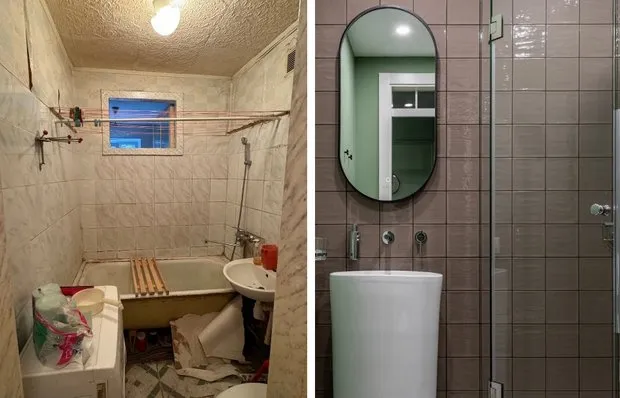 How a Micro Bathroom in a 44 m² Housing Unit Was Transformed: Before and After Photos
How a Micro Bathroom in a 44 m² Housing Unit Was Transformed: Before and After Photos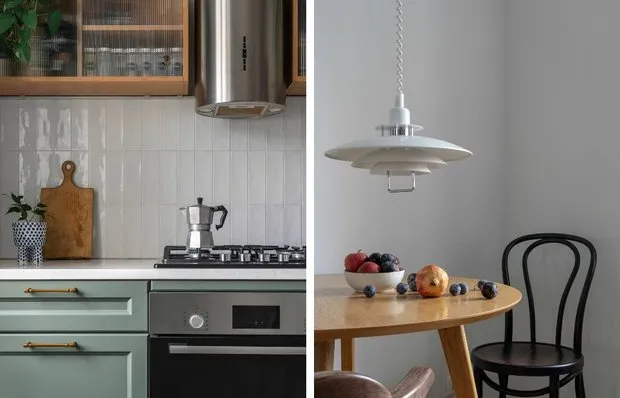 How an Architect Transformed a Kitchen in a Stalin-era 50 m² Apartment for Herself
How an Architect Transformed a Kitchen in a Stalin-era 50 m² Apartment for Herself 20 practical ways to update your interior without renovation and big expenses
20 practical ways to update your interior without renovation and big expenses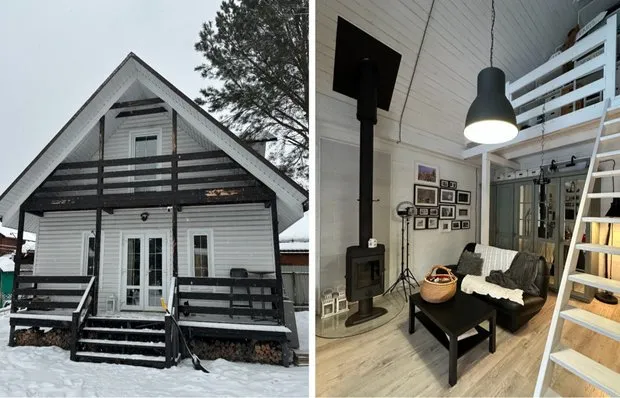 How They Designed a Cozy 53 m² Cottage with a 'Birdhouse' Loft Without a Designer
How They Designed a Cozy 53 m² Cottage with a 'Birdhouse' Loft Without a Designer